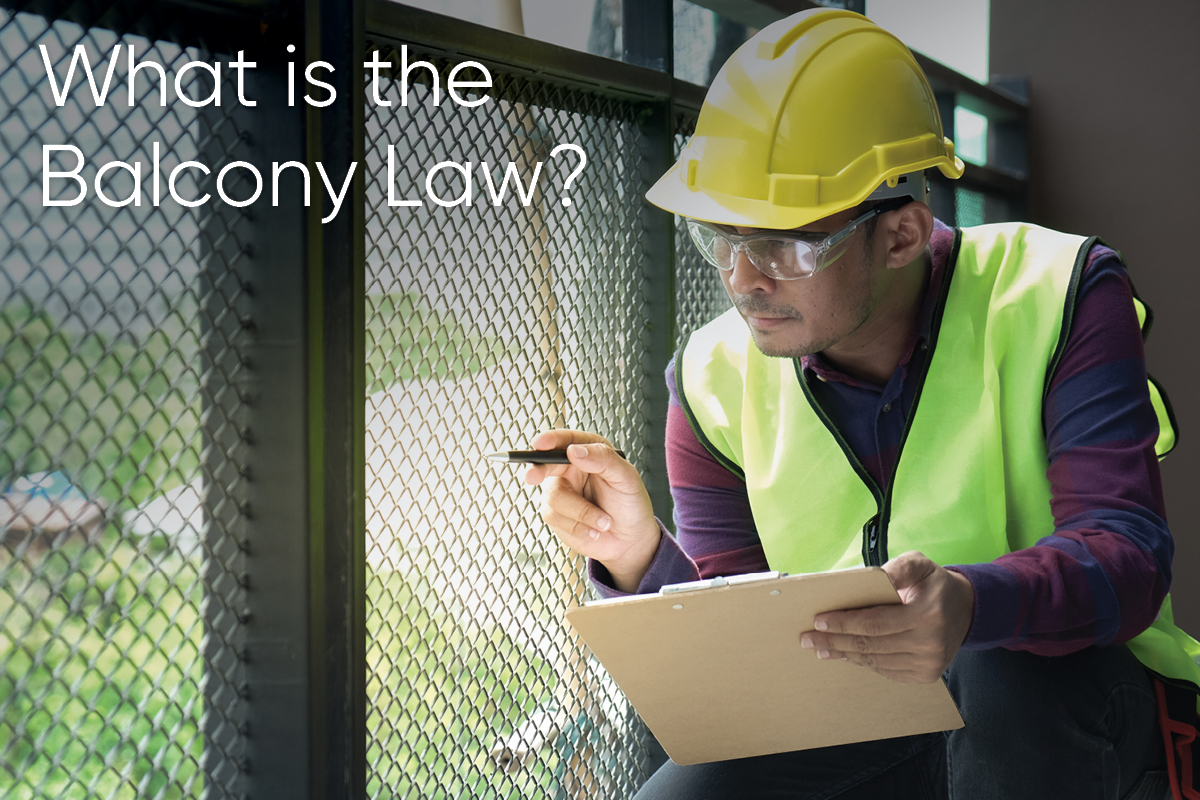On June 16, 2015, tragedy struck in Berkley California. At an apartment near the U.C. Berkeley campus, several students were congregating on a balcony when it collapsed. The accident resulted in the death of six students and injury to seven others.
After an investigation, it was determined that the balcony fell because of dry rot to the wood structure. Investigators determined that the accident could have been prevented if the balcony had been inspected, as it would have revealed the dry rot and the need for immediate repairs.
Bill SB 721: The Balcony Law
In response to the tragic Berkley accident, the California State Senate passed Bill SB 721, which has been referred to as the “Balcony Law.”
Under SB 721, landlords of multifamily buildings with three or more units are required to inspect all exterior elevated elements (EEE). This includes balconies, stairs, walkways, porches, and railings.
Landlords are only required to have the inspections performed on 15% of each element. For example, balconies and stairs are each separate elements. A landlord with both elements is required to perform the inspection on a 15% sample of all balconies and a 15% sample of all stairs in their building. Please keep in mind that this is the minimum standard of inspection set by the law.
These inspections must be performed by either a licensed civil engineer, structural engineer, architect, general contractor (holding an A, B, or C-5 license), or a certified building inspector — not employed by the jurisdiction wherein the inspection is being performed.
Inspections are required to be conducted every six years, with the first inspection required to be performed on or before January 1, 2025.
Also, if an immediate hazard is found to exist after an inspection, it must be reported to local authorities within 15 days, with emergency repairs to be performed by a time set by the local jurisdiction. In the event that a non-emergency hazard is discovered, it must be reported, and the repair must be completed within 120 days.
Exceptions
It is worth noting that the law does include a few exceptions. If the EEE is not made of wood, the law does not apply to the structure. Although, some local jurisdictions, such as San Francisco, have added more stringent local ordinances that require inspections to buildings with metal EEE.
Another large exception concerns common interest developments such as condo complexes. The law does not require that these buildings be inspected. Although a companion law, SB 326, requires apartment buildings being converted to condos to have an inspection performed prior to the sale of the first condo in the building.
Though there is not a rush to have these inspections performed immediately, multifamily clients should be aware of the impending deadline. If you are a Realtor, make your multifamily clients aware and recommend they schedule these inspections sooner rather than later.
Contributor, designer & admin for JohnHart Gazette.

